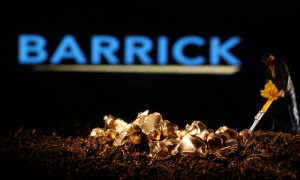Every time you look up there is another tall building rising into the blue sky from the sea level in Clifton. At the same time the sea is also rising along the Karachi coast, according to figures released periodically by various institutions.
There is also the increasing threat of cyclones and other threats that a rapidly changing weather, increased temperatures and overflowing population can generate. The increase in temperatures is really a serious issue as, according to reliable sources, our temperature increase is higher than the global average. Amidst all this multi-storied buildings continue to raising their head many on what is popularly known as reclaimed land.
This is what fascinates me to no end. The terminology reclaimed land. In simple English language it means getting back what was once yours. What logic is there to claim what was once under the deep sea was yours by any stretch of imagination.
It is more like forcibly removing a legal tenant and grabbing its property. From the meagre knowledge that I have reclamation is more or less exactly this. Land-filling to push back the sea and sand filling to create new solid ground where tall buildings are coming up at top speed.
Many of the reclamation projects are in Clifton. This used to be such a serene locality. Today it has rolled down to the Arabian Sea but in the early days of Partition it was restricted around Bath Island. I still remember huge ship anchors in the mud in and around Bath Island.
Recently, there was a book launch in Karachi in which not only the history of Bath Island but also that of Keamari and other islands was spelled out in detail. Interesting, thing is that Clifton used to be called ‘Hawa Bunder’, which perhaps pointed to the cool breeze in the area.
Well all that is now gone. In popular or should I say architectural terms we have reclaimed land from the sea.
To me it is simply a tussle between nature and human beings with one claiming victory as if defeating the other and gaining ground while in fact inviting its own tragic consequences such as disruption of ecosystems and destruction of habitats for wildlife resulting in loss of natural resources and biodiversity.
An example is when new plants and animals are introduced to an area, it can alter the balance of the existing ecosystem. The transformation of cool gusts of wind which had earned Clifton its nickname ‘Hawa Bunder’ into scorching bursts of hot air is an example where we have reclaimed vast stretches of land but turned around its weather for the worse.
You will be surprised to know that in this world where land-grab is popular sport there is an area unclaimed by any country. It is the 2060-km landlocked desert which lies between Egypt and Sudan known as Bi’r Tawil.
It is in a trapezoid shape and has no permanent residents. Only the Ababda tribe of Egypt sees this land as theirs. It is rumored that there are gold deposits in this area but still there have been no serious attempts by either country to pursue the matter.
On the other hand there are individuals like King Charles III, representing the British Crown, who holds over a staggering 6.6 billion acres of land, making the British royal family the largest landowner in the world.
This includes vast swathes of Canada, Australia, and other Commonwealth realms. What about the good old US of A. No story is complete without Uncle Sam. In the US, the largest private landowners are the California’s Emmerson family; the Emmersons have increased their land-holdings by more than 100 square miles to over 2.4 million acres, making them highest land holders in the US.
This really leaves what we in Pakistan term as land barons as mere pygmies compared to the land owners of the world. We are working on it though and as I see more high rises come up I see our land barons inching their way upwards even if it is mostly on what is called reclaimed land with its environmental consequences.
Copyright Business Recorder, 2025
The writer is a well-known columnist






















Comments